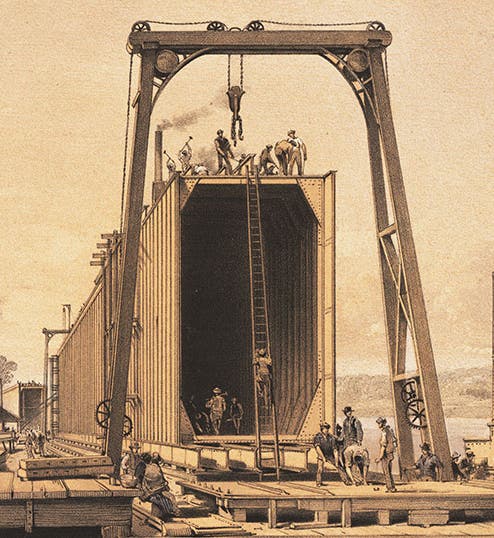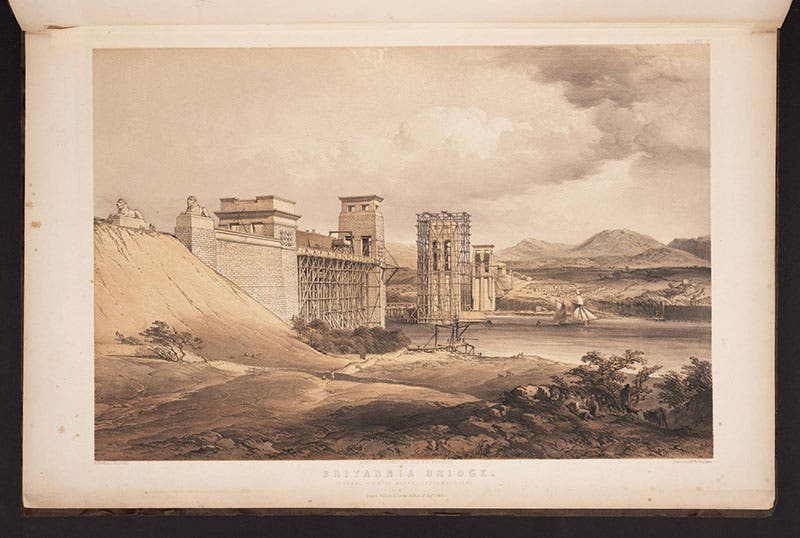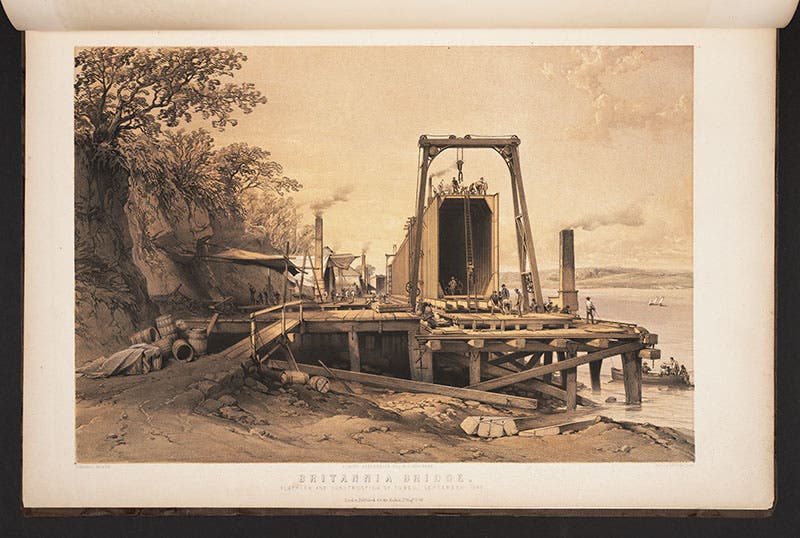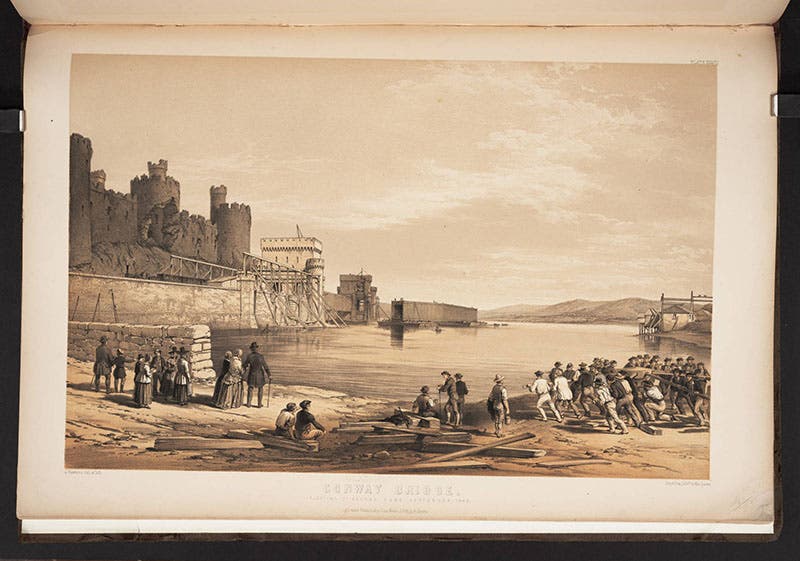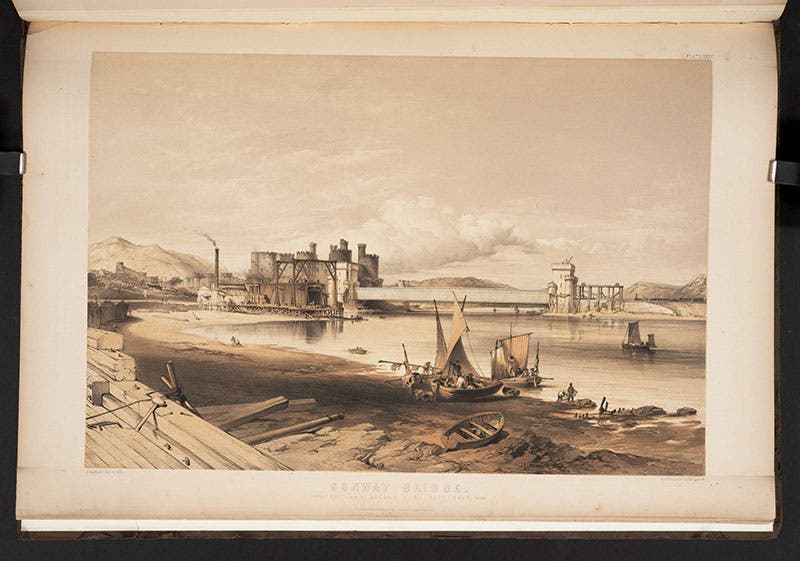Scientist of the Day - Edwin Clark
Edwin Clark, an English civil engineer, died Oct. 22, at the age of about 70. Clark was supervising engineer on the Britannia Bridge project of the late 1840s. The bridge was designed by Robert Stephenson to cross the Menai Straits between Wales and Anglesey Island. Stephenson came up with a brand new design, which he called a tubular bridge, where the railroad traffic would be carried through hollow wrought-iron tubes mounted on stone piers. Building those tubes and raising them into place was a massive undertaking, and that was Clark’s job.
The design was first tested on a shorter bridge to Conway Castle in north Wales, before proceeding to the Menai Straits. The tubes were manufactured on shore, and then floated by barge into position between the piers. Then they were slowly raised into position by hydraulic jacks.
All went well, the Britannia Bridge opened for traffic on Mar. 5, 1850, and Clark then published a handsome book about the project, with tinted lithographs of some of the important construction stages for both bridges. The Britannia and Conway Tubular Bridges (1850) is in the Library’s History of Science collection; we displayed it in our 2002 exhibition: Centuries of Civil Engineering and in our 2013 exhibition, Crayon and Stone, which is not available online.
The images here are all taken from Clark’s book, and depict, in order: a detail of the third image, tube construction on shore; building the piers; constructing a tube on shore; floating a tube into position; and a tube being jacked up onto the piers. The first three images depict construction on the Britannia Bridge; the last two show the Conway Bridge
Dr. William B. Ashworth, Jr., Consultant for the History of Science, Linda Hall Library and Associate Professor, Department of History, University of Missouri-Kansas City. Comments or corrections are welcome; please direct to ashworthw@umkc.edu.

